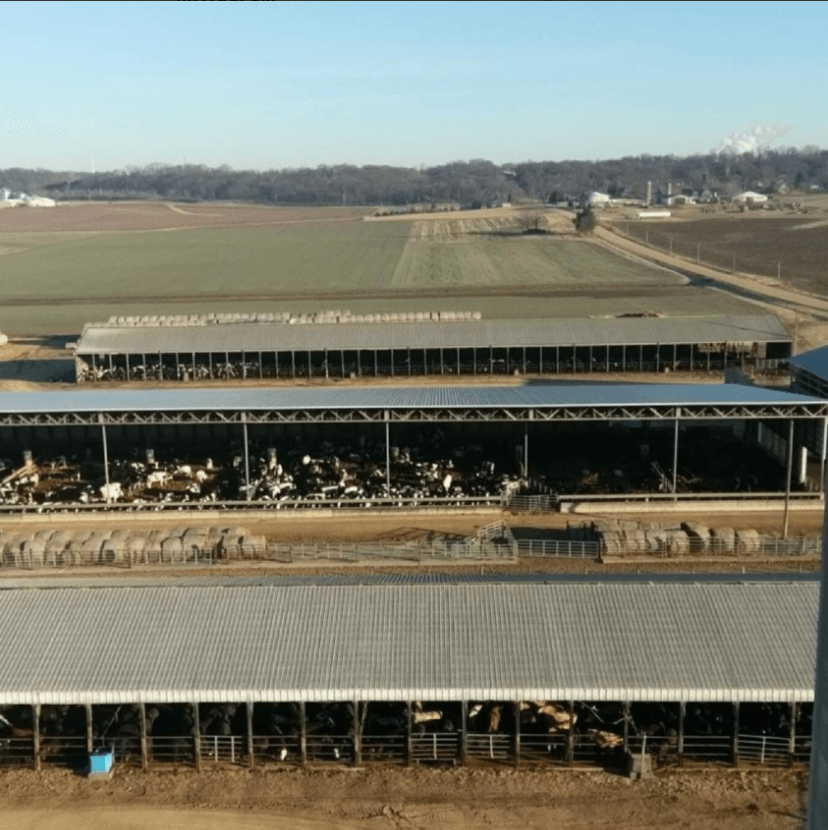Billing and troubleshooting made faster with accurate data
Austin Kukuczka and his father, Randy, feed 500-600 head of Holstein and Angus steers while also running a trucking company, farming more than 1,000 crop acres and selling beef to local consumers.
Time is a precious commodity for the Kukuczkas, who operate Kukuczka Beef near Hatley, Wisconsin. As their operation grew and diversified, it made sense to ditch time-consuming habits and replace them with efficient technology.
Easy, accurate input cost tracking
“Our previous system was as old school as it gets, using just a pencil and paper,” says Austin. “Each day we would hopefully write down what we fed, and once cattle were shipped out, we’d go through paperwork to get closeouts done. If we didn’t write something down, we’d do some guesswork to figure a price. Switching to Performance Beef was a night and day difference for us.”
Austin and Randy grow 80% of their feed on the farm and own all of their cattle. Instead of taking averages of what they think the feed cost is, Performance Beef allows them to input actual ingredient costs and get it down to the penny.
“Using average feed cost, we could have been $20, $30 or even $40 off per head,” says Austin. “With Performance Beef, we know exactly what we have into them because the program tracks it.”

Tracking treatments and testing/learning
Cost tracking capabilities go beyond just feed inputs. With the paper and pencil system, the Kukuczkas would fall behind on recording vaccine, implant and treatment administration.
“Now, if we’re working cattle, we’ve got the Performance Beef app pulled up on our phones and we’re inputting medication cost for an exact picture of inputs,” says Austin.
Performance Beef has also allowed them to test and learn about new ingredients and products.
“We’ll sometimes get calls from places asking if we can feed our cattle a product they want to get rid of,” says Austin. “We just plug the ingredient into Performance Beef, call up our nutritionist and let them know we plan to feed it, determine the right percentage to feed and then input the price. Then, a week or two later, we go into the analytics and look at rate of gain and cost of gain. It’s easy to see if the numbers work out or if you’re feeding something that’s not worthwhile.”

Trouble shooting feed intake drops with real-time data
The data tracked in Performance Beef even helped identify a potential problem.
“About a year ago, we were vaccinating groups of 100 head – about 400 head total,” says Austin. “And, after vaccinations, each group’s feed intake would drop in half for six or seven days, right on the dot. It happened every time, like clockwork, with each of the four groups.”
The Kukuczkas found it concerning, but initially chalked it up to giving the cattle a heavier load of shots – three vaccinations and an implant.
“We just figured, hey, no one feels good after getting poked four times,” says Austin.
The next time around, they were only using one of the medications that was used the first time. Oddly enough, they saw the same thing happening across two groups. Feed intake dropped off for a week.
“So, we’d narrowed it down to a specific medication being hard on cattle,” says Austin. “I did some digging online and found other people were having the same experience with this medication.”
Austin credits the data kept in Performance Beef with helping them troubleshoot and identify the issue.
“With data, it’s not just a feeling – it’s reality – and we’ve since been able to change our vaccine program to maintain feed intake after vaccinations,” says Austin.
Billing efficiently with fast closeouts
How much is your time worth? It’s the question Austin would ask of others considering Performance Beef.
“How are you keeping track of your groups of cattle, what you’re feeding them, your inputs?” asks Austin. “If you’re feeding out cattle, it doesn’t have to be an hours-long process of guessing and hoping you’re right. It can be as simple as clicking a few buttons, printing a closeout report and billing your customers.”
The software pays for itself in billing alone, Austin says.
“I’ve got other jobs, aside from the cattle part of our business, and I value my time. I’d rather not be up until 10 at night figuring out billing,” he says.
.png)
READ MORE STORIES LIKE THIS
Six Performance Beef Features You Should Be Using
Get the most out of your subscription with these key features
Here are six features that help you save time and gain better insights into your business. See how you can integrate them into your operation today.
Brad Dunlap
Rives Junction, Michigan
Joseph Ring
Oregon, Illinois
Joseph Ring custom feeds cattle in Illinois, working with his family at Nordman Feedlots. He was looking for a tool to streamline data collection and analysis that was reliable and user-friendly. Now, Joseph uses Performance Beef to meet the ever-changing needs of his family’s operation.
CHECK OUT PERFORMANCE BEEF FOR YOURSELF
Our digital demo walks you through popular functions in our app, helping you visualize how it can easily become part of your day-to-day tasks.


.png)

